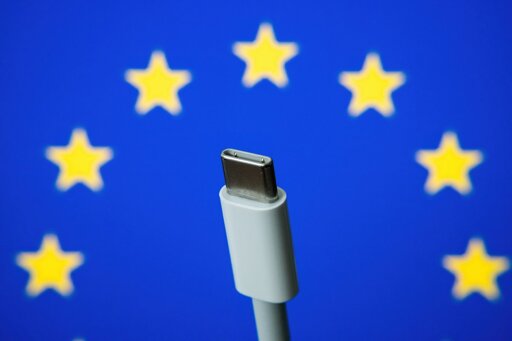The European Commission has revised the Ecodesign requirements for external power supplies (EPS). The new rules aim to increase consumer convenience, resource efficiency, and energy efficiency. Manufacturers have three years to prepare for the changes.
The new regulations apply to external power supplies that charge or power devices such as laptops, smartphones, Wi-Fi routers, and computer monitors. Starting in 2028, these products must meet higher energy efficiency standards and become more interoperable. Specifically, USB chargers on the EU market must have at least one USB Type-C port and function with detachable cables.
With the regulation, the EU is also establishing minimum requirements for the efficiency of power supplies with an output power of up to 240 watts that charge via USB Power Delivery (USB-PD), among other things, under other things, minimum requirements. Power supplies with an output power exceeding 10 watts will also have to meet minimum energy efficiency values in partial load operation (10 percent of rated power) in the future, which is intended to reduce unnecessary energy losses.
Interestingly,
This article was originally published in German. It was translated with technical assistance and editorially reviewed before publication.
I was rather surprised to see a Heise story linked off Slashdot, but this is a great use of technology to broaden the audience. Way less friction than every user needing a browser plugin for translation.
Historically, the charger situation has been, well, a shitshow. I’ve had more than a few devices over the years where the proprietary cable died, and getting a replacement was so cost prohibitive that just buying a replacement device that came with one was the more logical move.
USB-PD kinda seems like the silver bullet here. Though I’m not sure that’s true unless further regulations require all USB-C cables to be able to provide 240W, and even then, there will be a long tail on older cables still being in use.
But this could be game changing in like a decade. Imagine charging with any cable and any DC converter. We’ll look back on this mess as though different devices required proprietary wall outlets!
Meanwhile, here in the states, regulators are much more concerned about inflatable frog suits than any lurch toward sustainability.
@Powderhorn Making all cables 240W isn’t going to be possible. They need both thicker conductors for higher amperage (3A vs 5A), and thicker insulation for higher voltage (20V vs 48V). Those can get quite unwieldy compared to standard cables.
I have a power bank that’s rated for 120W, but the built-in retractable cable is only 60W. The mechanism for anything else would be either comically large or have a uselessly short cable.
This is a 500W charger with one port that can do 240W.
https://www.amazon.com/UGREEN-Charging-Station-Temperature-Space-Saving/dp/B0DL5L1ZLH
It’s quite large and heavy. 2.2kg (4.9 lbs).
There are going to be some practical limitations on what people are going to be willing to carry for portable stuff.
They won’t all be interchangeable. They can have totally different max power delivery, and a device is free to require more (up to 240W by spec). The nice thing about USB-PD is it’s negotiated and a device won’t (shouldn’t) try to pull too much power for a given plug. So as long as everyone sticks to specs, they’ll be interchangeable so long as the supply can supply enough. If it cannot, at least a device should keep itself off as if a chord isn’t plugged in, or preferably have some sort of “supply too low” sign.
I’m less concerned about the max power, but rather the minimum power.






